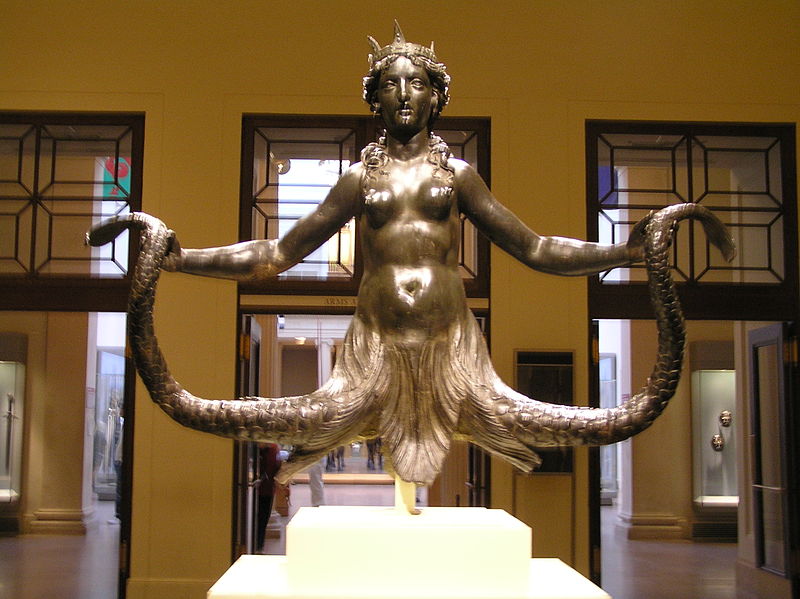"Siren, Bronze, Italian (Rome), ca. 1570-90.
The Metropolitan Museum of Art

The Mixoparthenos (Greek: Μιξοπάρθενος) was a Greek mythological figure, traditionally hailing from the Black Sea region where her image is seen frequentl. The name means "half-maiden" .
The form of the Mixoparthenos is distinctive - above the waist, a beautiful woman, but covered with scales from waist down, ending in a double snake-tail. Some versions have the Mixoparthenos ending in a double fish-tail. Herodotus's Histories (4.9.2), Heracles marvels at a Mixoparthenos when he meets one, and mates with her, producing three sons, the youngest of which eventually became the founder of the Scythian nation.
The Starbucks logo depicts a Mixoparthenos, of the double fish-tailed variety.














